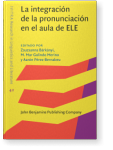Chapter 14
La enseñanza de la pronunciación a estudiantes de español como lengua adicional con Trastornos de los Sonidos del
Habla
Diego Paniagua Martín | Instituto Universitario de Integración en la Comunidad (INICO), Universidad de Salamanca
La existencia de dificultades en la producción articulatoria o el uso funcional de
sonidos/fonemas, con consecuencias variables en la inteligibilidad comunicativa, genera obstáculos en el proceso de
enseñanza-aprendizaje para los estudiantes de español como lengua adicional (ELE) que presentan Trastornos de los
Sonidos del Habla (TSH). Esta situación puede influir de manera diversa en la comprensión y expresión lingüística,
agregando una capa de complejidad al ámbito educativo. Por ello, este capítulo tiene como objetivos: (1) ayudar a
comprender la sintomatología de los TSH mediante la descripción de sus diferentes alteraciones y manifestaciones; (2)
describir cómo es el aprendizaje de la pronunciación del alumnado de ELE con TSH; y, por último, (3) ofrecer al
profesorado pautas y modelos didácticos de cara a diseñar programas educativos adecuados y progresivos que se adapten
a las necesidades de este alumnado.
Article outline
- 1.Introducción
- 2.Fundamentos sobre el habla para la práctica educativa y el TSH
- 3.TSH, alumnado de ELE y pronunciación
- 4.Buenas prácticas docentes en la integración de la pronunciación para el alumnado de ELE con TSH
- 5.Líneas de investigación futuras en la enseñanza de la pronunciación a estudiantes de ELE con TSH
-
Notas
-
Referencias bibliográficas
This content is being prepared for publication; it may be subject to changes.
Article language: Spanish
